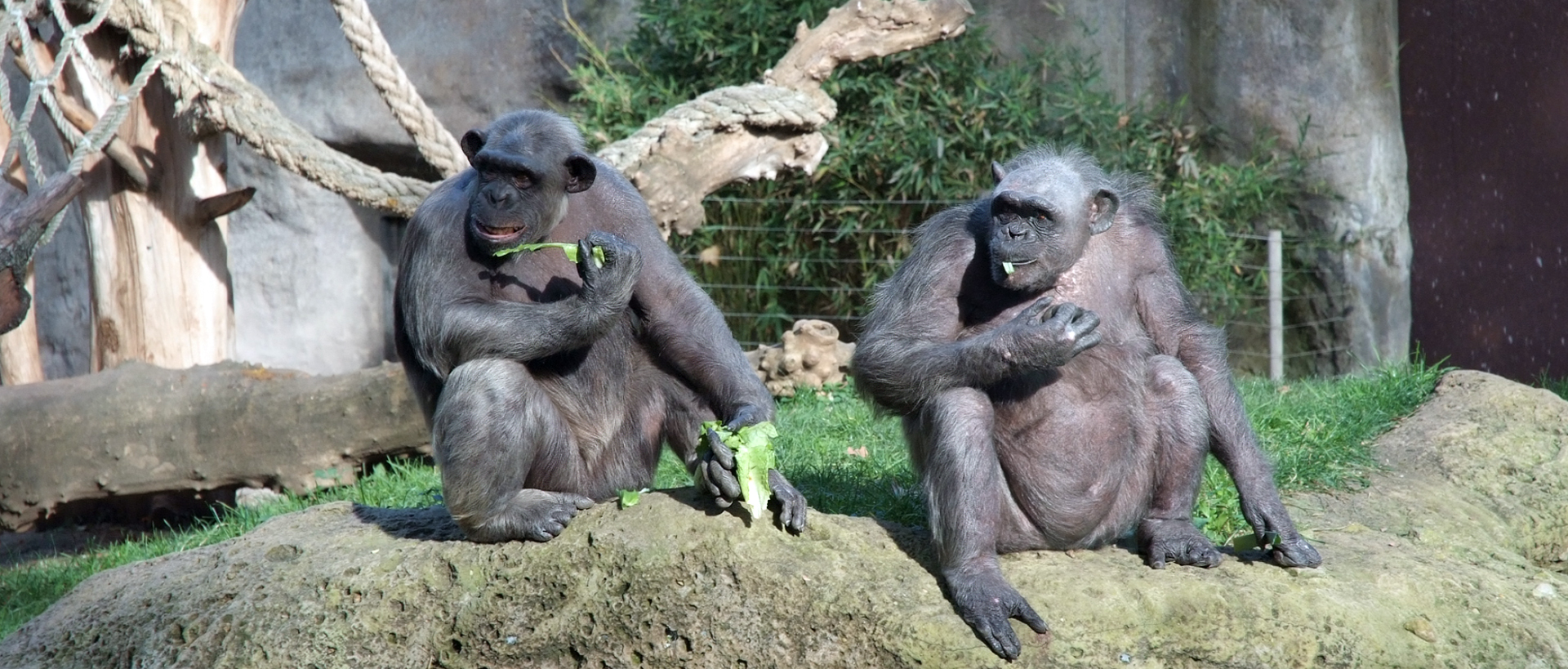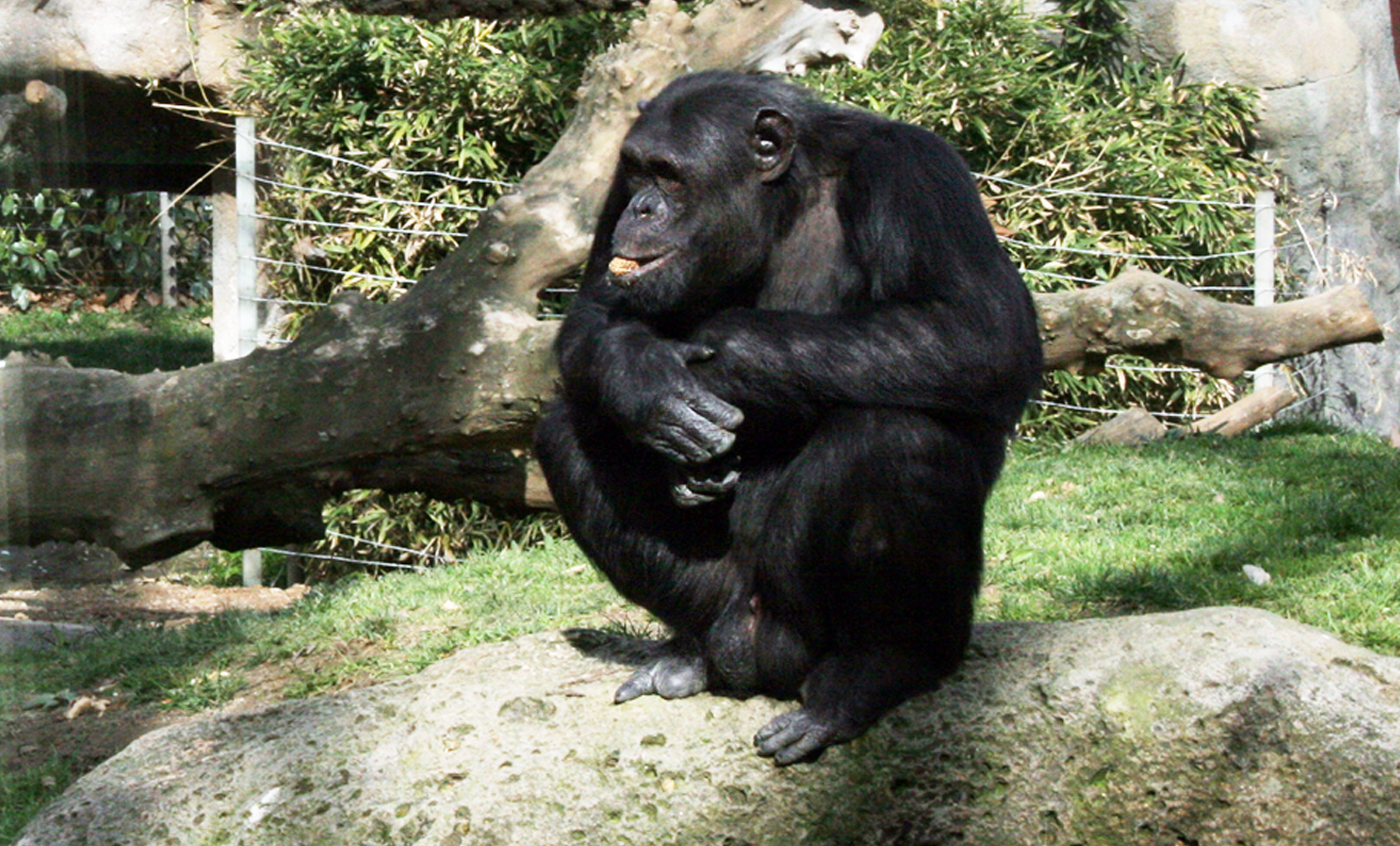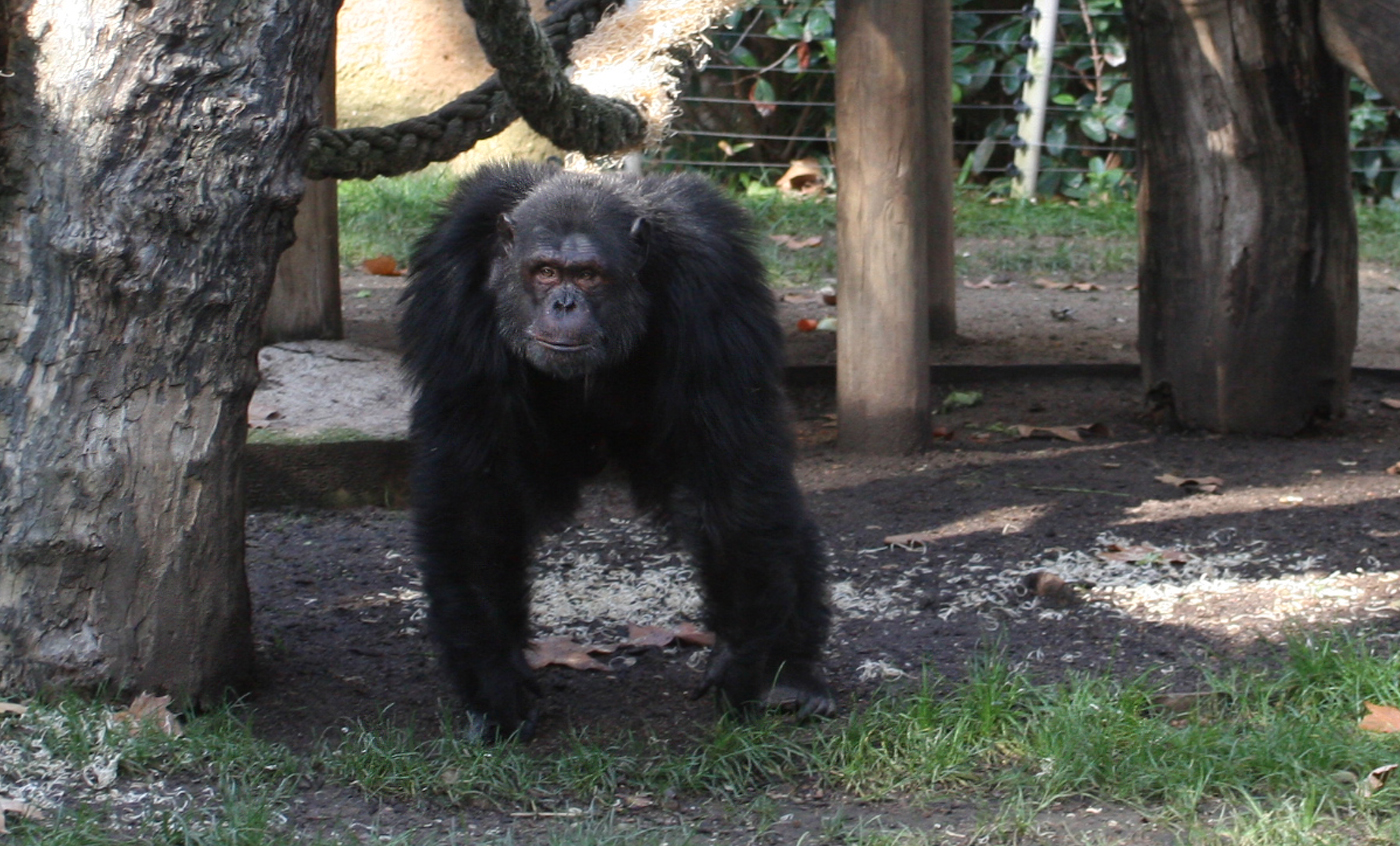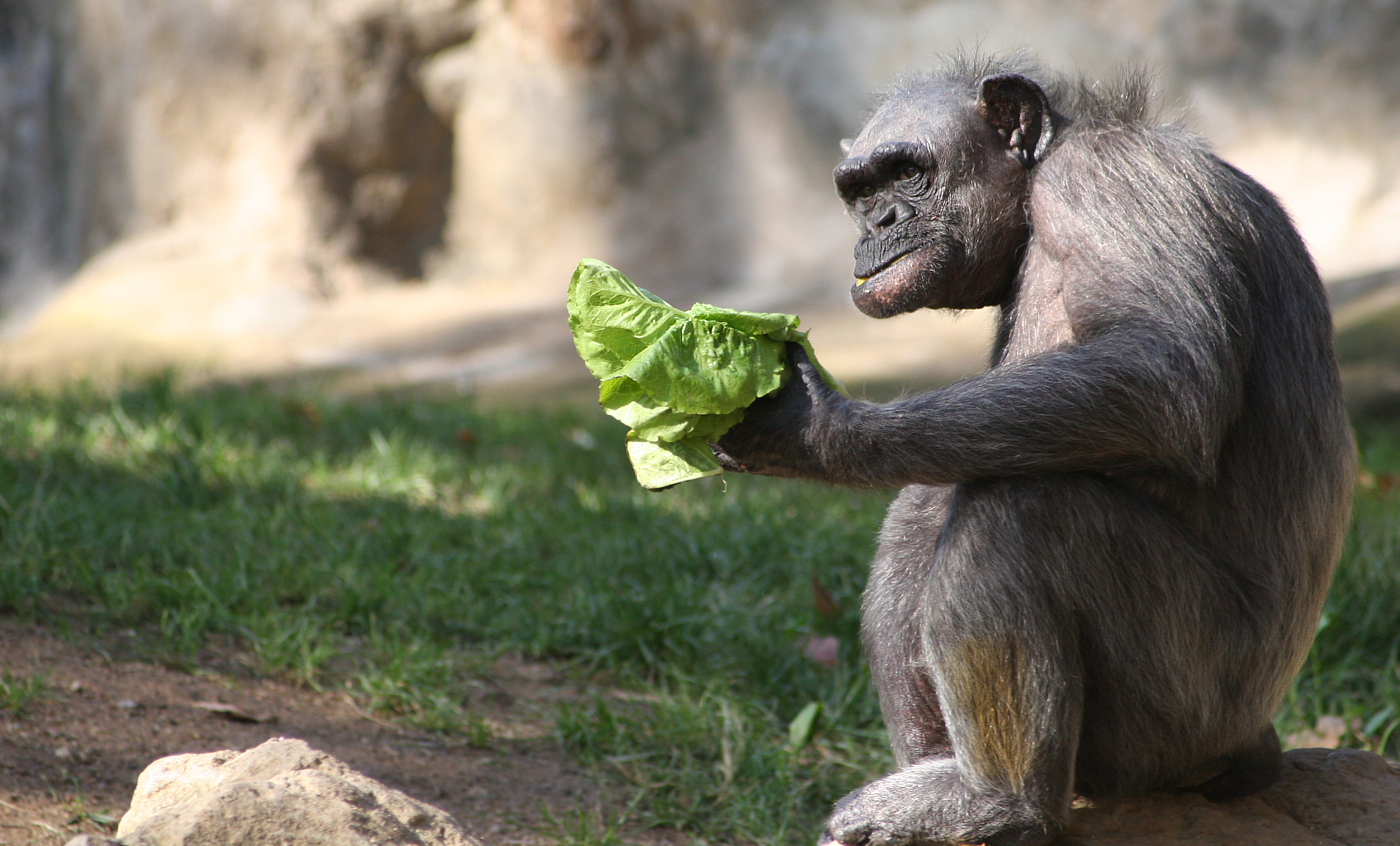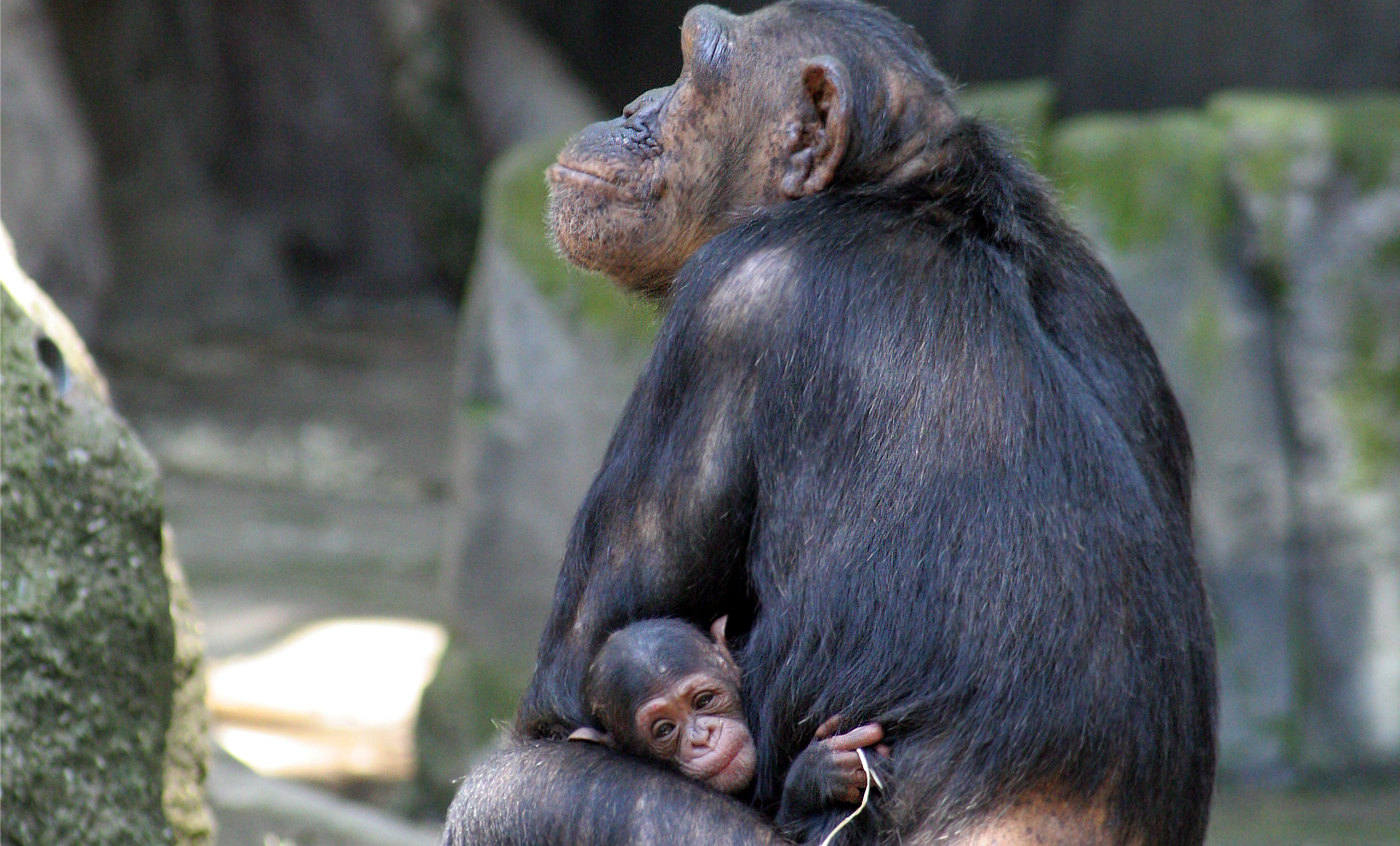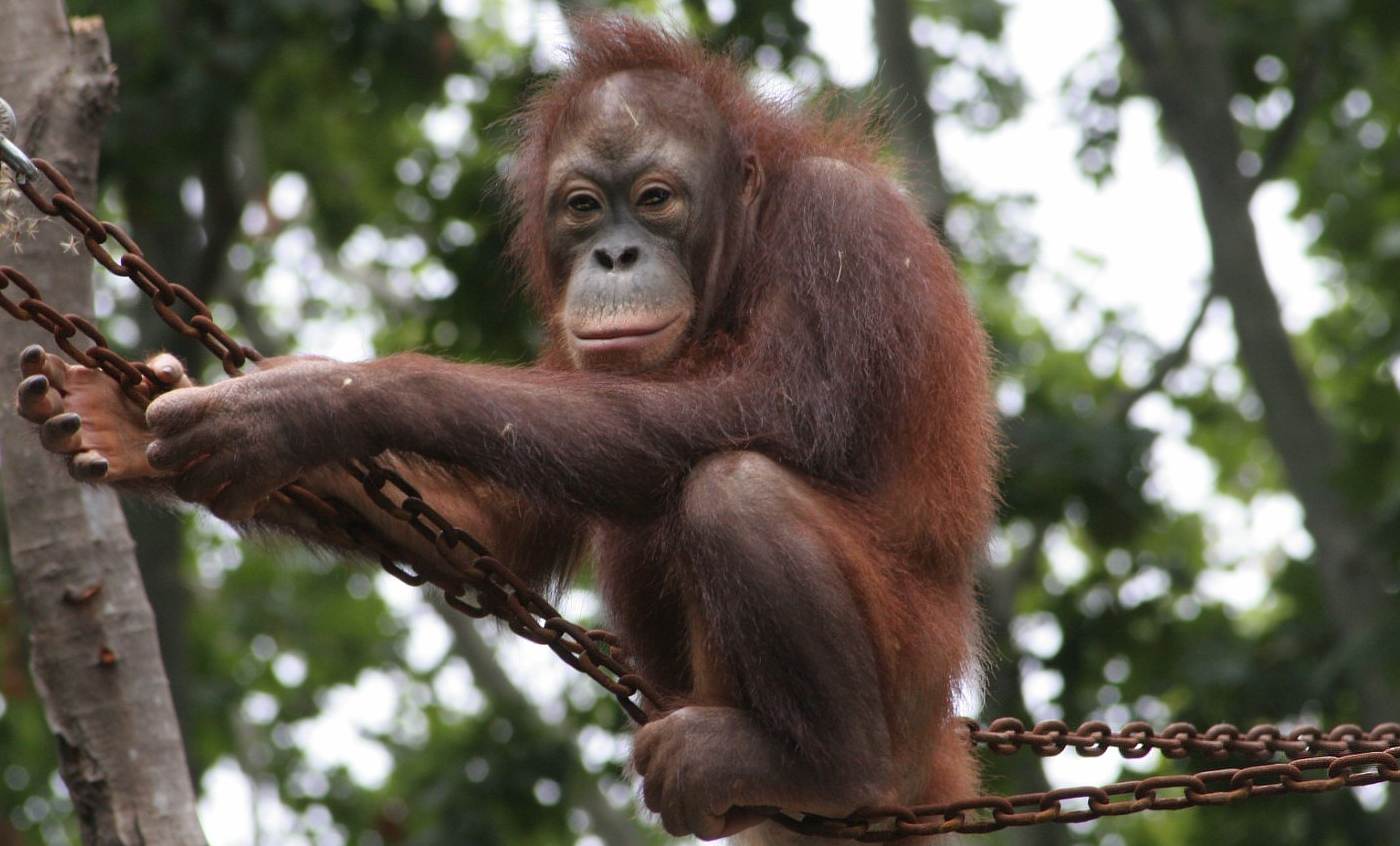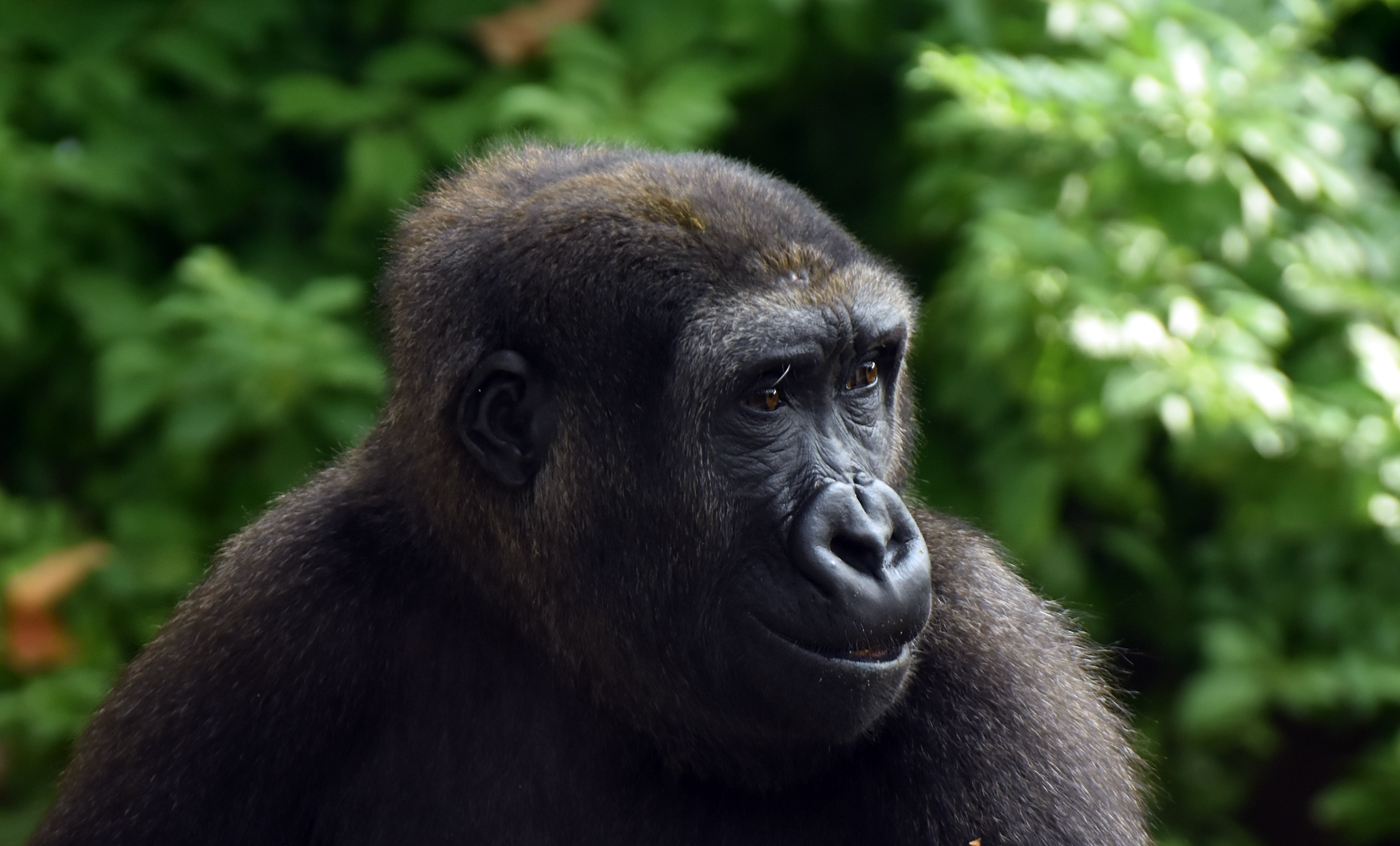Chimpanzee
The chimpanzee is a typical inhabitant of rainforests in equatorial Africa and is the closest species to human beings. It is able to use tools by gathering and adapting small sticks to obtain access to termites and it can also use rocks to break hard seeds.
As in gorillas and orangutans, chimpanzees build a nest on the top of trees every night, made from branches and leaves, to spend the night. They live in social groups with a dominant male. Several families can gather temporally, forming tribes.
Breeding program
Natural habit
Central and western Africa: Ivory Coast, Ghana, Guinea, Guinea-Bissau, Liberia, Mali, Nigeria, Rwanda, Senegal, Sierra Leone, Cameroon, Gabon, Equatorial Guinea, Angola, Central African Republic, Congo, Democratic Republic of the Congo, Sudan, Uganda and Tanzania.
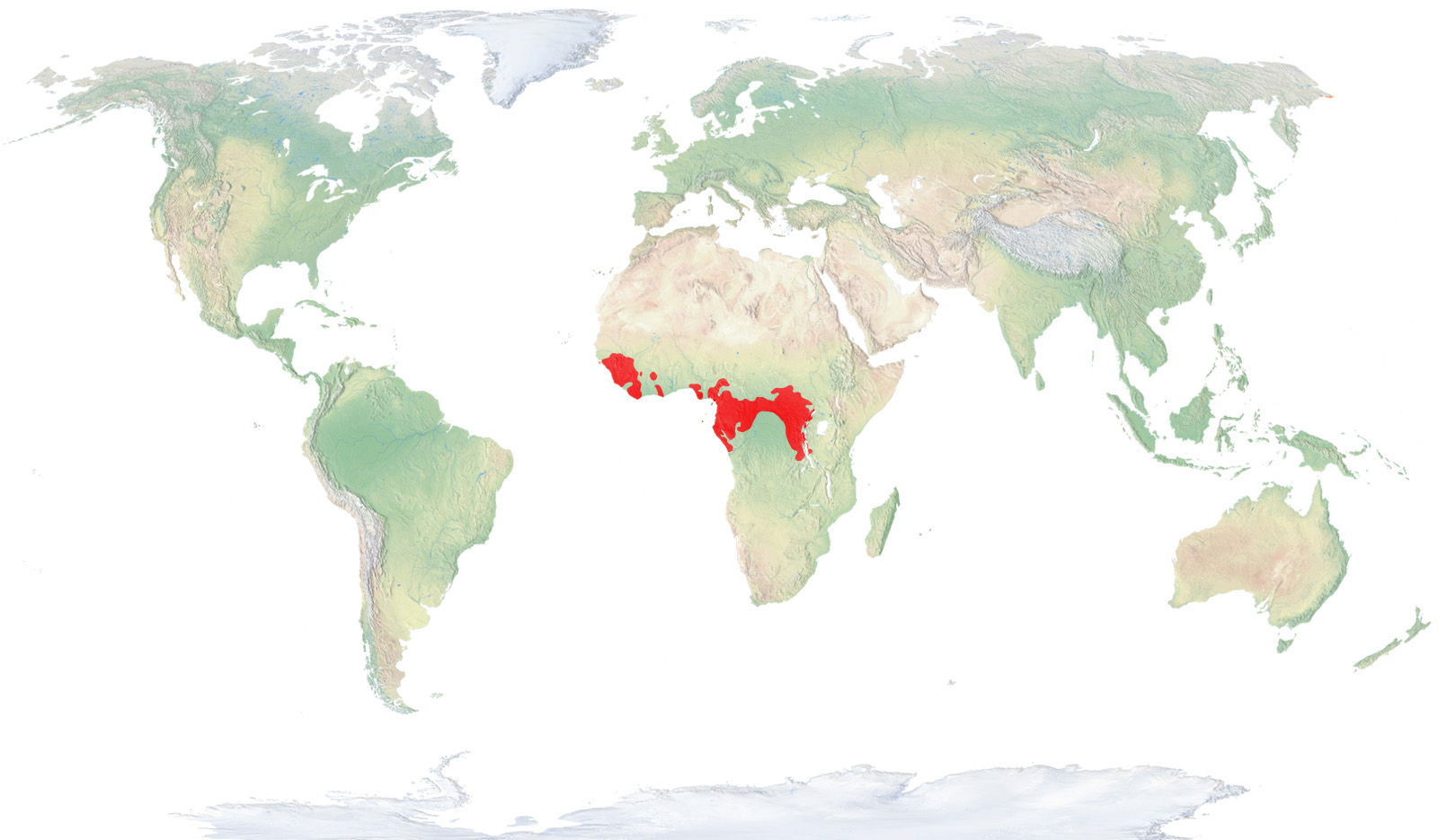
- Distribution / Resident
- Breeding
- Wintering
- Subspecies
Risk level
- Extint
- Extint in the wild
- Critically endangered
- In Danger
- Vulnerable
- Near threatened
- Minor concern
- Insufficient data
- Not evaluated
Taxonomy
Physical characteristics
Biology
Reproduction
Biology
Its body is covered by a thick blackish hair, except for the face, fingers, hand palms and soles of the foot. It has opposable thumbs in the hands and feet, which grant them a firm grasp. Their arms are much longer than their legs, spanning one and a half times the body’s height, which in erect position on their legs can reach 1,7 m. Their long arms allow chimpanzees to swing from tree limb to tree limb, a form of locomotion called brachiation.
It inhabits rainforests, either primary or secondary, riparian forests, swamp forests and forest-savannahs.
It is an omnivorous animal as, though its diet is basically vegetarian -consisting of fruits, leaves, seeds, flowers, bark, resins and honey- it complements its diet with insects and, occasionally, small vertebrates that are hunted in group, in an organized manner. It often hunts birds and small mammals such as duikers or antelope calves, but they can also capture and eat other small and medium primates, like the red colobus and other species of guenons of the rainforest.
The gestation of the chimpanzee lasts for eight months and a single infant is born each time, weighting around 2 kg. Infants are weaned when they are 3 years old, but they generally maintain a close relationship with their mother for several more years. Puberty is reached when they are 7 or 8 years, and their life span is of 60 years in captivity.
The chimpanzee is a typical inhabitant of rainforests in equatorial Africa and is the closest species to human beings. It is able to use tools such as gathering and adapting small sticks and introducing them in termite nests to capture termites; picking and properly using stones to break hard seeds, or making sponges with leaves or moss, to use the water in the cavities of trees.
It is a more arboreal species than the gorilla, but less than the orangutan, for it climbs down to the ground very often. Its locomotion on the ground is quadrupedal, supporting the body's weight on the medium phalanges of the hands and feet. The form of locomotion of the great African apes and the orangutans is different, as the latter sand on the palms of their hands and feet. However, chimpanzees can also move on two feet, if their hands are busy or for short distances.
It leads a social life in family, with a dominant male and various females with infants, although sometimes several families temporally gather, forming quite numbered tribes. Males can form temporary associations as well, in which a strict hierarchy is established, that causes many fights to occupy its top positions.
As in gorillas and orangutans, every night chimpanzees build sleeping nests in the shape of a platform, with leaves and branches, on the top of trees. These nests allow scientists studying their behaviour to spot the presence of chimpanzees in an area.
Up to four chimpanzee subspecies are distinguished: Pan troglodytes verus, which inhabits the rainforests of western Africa, in the northern part of the Guinea gulf; Pan troglodytes ellioti, which only lives in Nigeria and Cameroon; Pan troglodytes troglodytes, which lives in the rainforests in the centre of the continent; and Pan troglodytes schweinfurthii, which can be found in the eastern area of central Africa.
In Africa lives another chimpanzee species, the bonobo (Pan paniscus), which was not acknowledges by scientists until 1929, and that can be differentiated by some physical characteristics and, mainly, by its social and sexual behaviour.
As in all Pongids, the chimpanzee is critically endangered nowadays, mainly due to the destruction of its habitat, although is also hunted by humans for its meat and, even though it seems hard to believe nowadays, to be used as pet animals.



